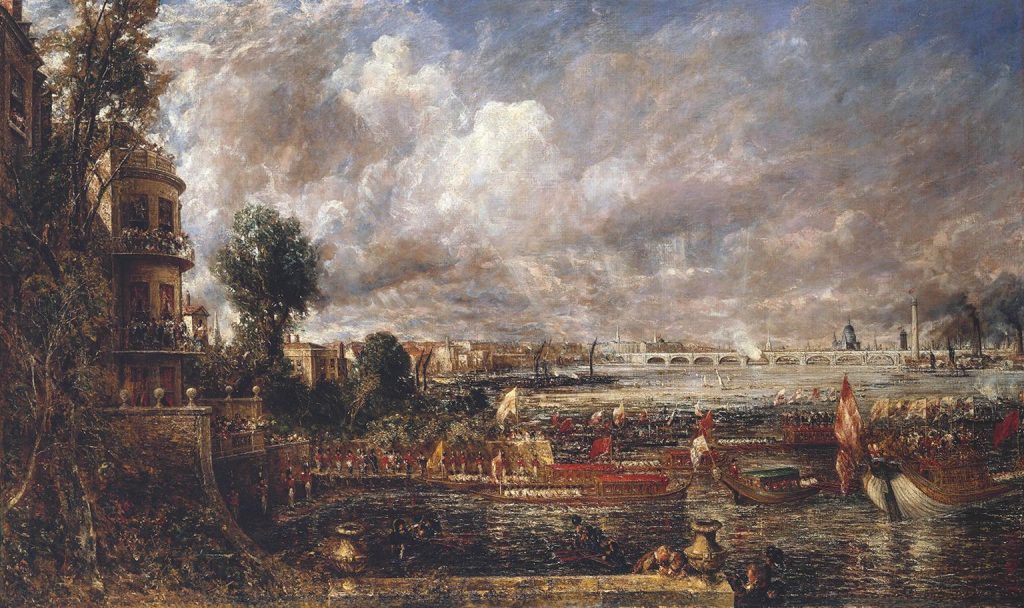Two Short Accounts on the Old Waterloo Bridge
Posted in 1800-1899, 19th Century, Architecture and tagged with 19th Century, Colonial history, colonialism, Constable, Empire, Imperialism, Legacies of colonialism, London history, Waterloo Bridge

Before structural issues led to a redesign (resulting in Giles Gilbert Scott’s concrete bridge built in 1942), Waterloo Bridge was considered the most beautiful of all London’s bridges, whose aura was captured more than once by artists: including Constable and Monet during his stays at the Savoy.
The following accounts, one by an English archeologist and the other by a French engineer, are good examples of the enthusiasm the old bridge aroused.
“In short the accuracy of the whole execution seems to have vied with the beauty of the design, and with the skill of the arrangement, to render the Bridge of Waterloo a monument, of which the metropolis of the British empire will have abundant reason to be proud for a long series of successive ages.”
– John Britton, 1826 [1]
“ […] The Waterloo Bridge will exists to tell the most remote generations ‘Here was a rich, industrious, and powerful city.’
[…] But if tradition instruct the traveler that six years sufficed for the undertaking and finishing of this work, he will admire still more the nation in which similar undertakings could be the fruit of the efforts of a few obscure individuals, lost in the crowd of industrious citizens.
Whereupon the Frenchman concluded by calling Waterloo Bridge, in the manner of his time that did not shy away from Antique models, “this colossal monument, worthy of Sesostris and the Caesars”.
– Engineer reporting to the French Institute, 1820s [1]
While they certainly seem excessive to our eyes today, these quotes highlight how in the same practical building we can read two opposing forces which nourished early nineteenth-century and then Victorian Britain. In the engineer’s complements, we can read admiration for the “antique model” driving the arts. His assertion that the bridge would be “worthy of Sesostris and the Caesars” expresses admiration for the bridge precisely because he sees it as a equivalent to a grand monument of an Egyptian king or the Roman leader. Britton’s comments reflect the engineering frenzy driving science (“the accuracy of the whole execution”). Command of both science and arts are then seen as the means to achieve a lasting influence, they will “tell the most remote generations” of Britain’s achievement. Finally, Britton’s image of “the metropolis of the British empire” gives us an insight into the Zeitgeist which fuelled the notion of Pax Britannica – the idea of Britain as centre of a peaceful, well-governed world.
The bridge’s beauty, then, was as much to do with aesthetics as it was the European western – particularly British-colonial – belief in dominance and the rightful place of its empire.
Sources
[1] John Britton and Augustus Pugin, Buildings of London, London : J. Taylor, Volume II, 1826, p. 39

